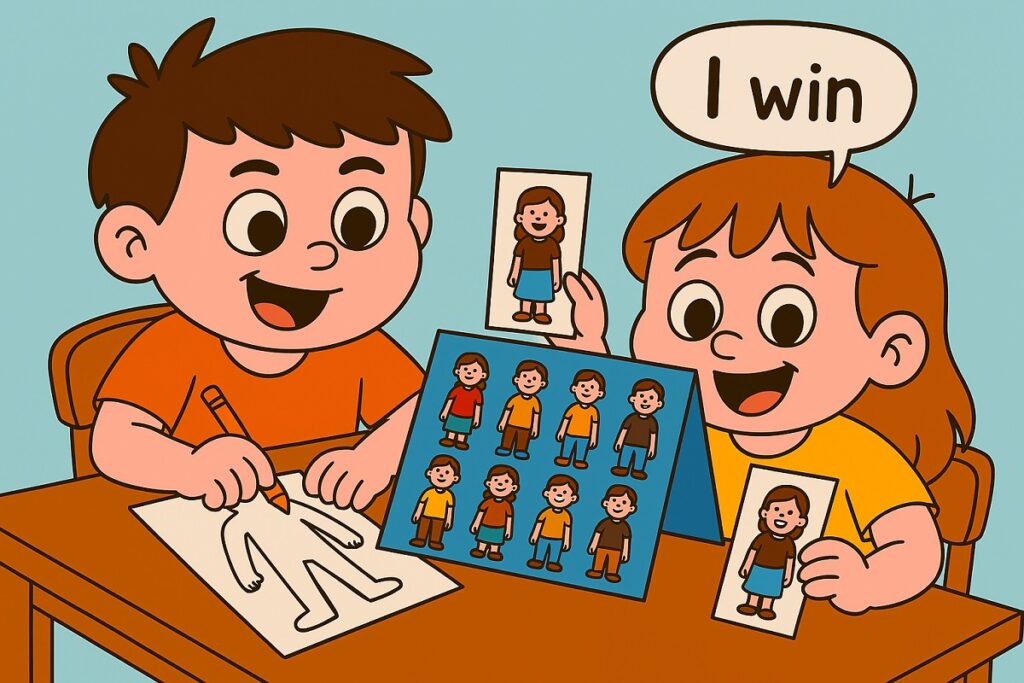
One of the main challenges in teaching English to children has to be engagement. Research and practice consistently show that children learn most effectively when they are emotionally and socially involved in the learning process. In this context, interactive activities such as “Guess Who? – Clothes Game” offer more than enjoyment; they serve as learning experiences that develop communicative skills.
How the Game Works?
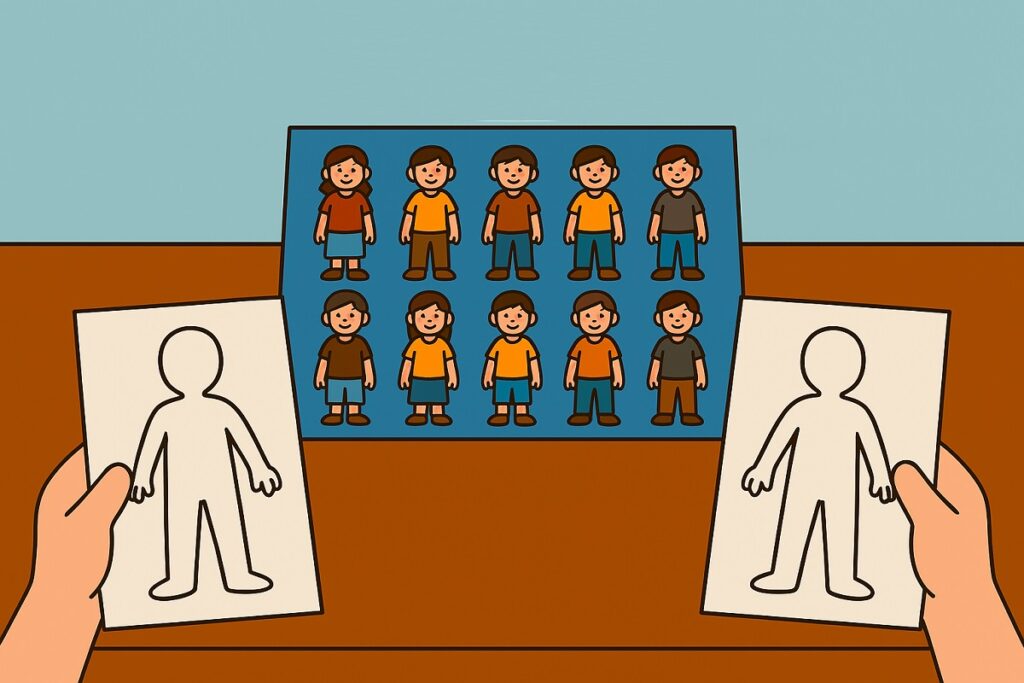
The game is a guessing activity focused on vocabulary related to clothing and physical appearance.
The task begins with each learner secretly selecting two characters from a visual chart depicting people with different outfits and physical features. Students then draw two blank body outlines on paper to represent their chosen characters.
During the game, the players alternate asking yes/no questions—such as “Is she wearing boots?” or “Does he have short hair?”—to determine which character their partner has selected. With every correct guess, the student adds that clothing item or feature to their drawing. The game continues until one player feels confident enough to make a final guess saying: “I think it is number 3!” If correct, they win the round.
Pedagogical Value

From a pedagogical perspective, game-based tasks introduce manageable cognitive challenge, keeping students alert and focused. Rather than repeating isolated vocabulary, students use language to achieve a goal. Every question asked mirrors real-world language functions: asking for information, describing people, and confirming understanding. What begins as a game becomes a rehearsal space for real-life conversations, all in a low-pressure setting where children learn to connect form (grammar and vocabulary) with function (using language to achieve something).
Conclusion
Integrating games like «Guess Who? – Clothes Game» provides learners with meaningful opportunities to practice English in context. It supports vocabulary acquisition, grammatical accuracy, and oral fluency, while also being engaging and offering collaborative learning. I believe games like these are important tools for creating a more student-centered language development in the classroom.
Here you can explore this subject with an infographic.
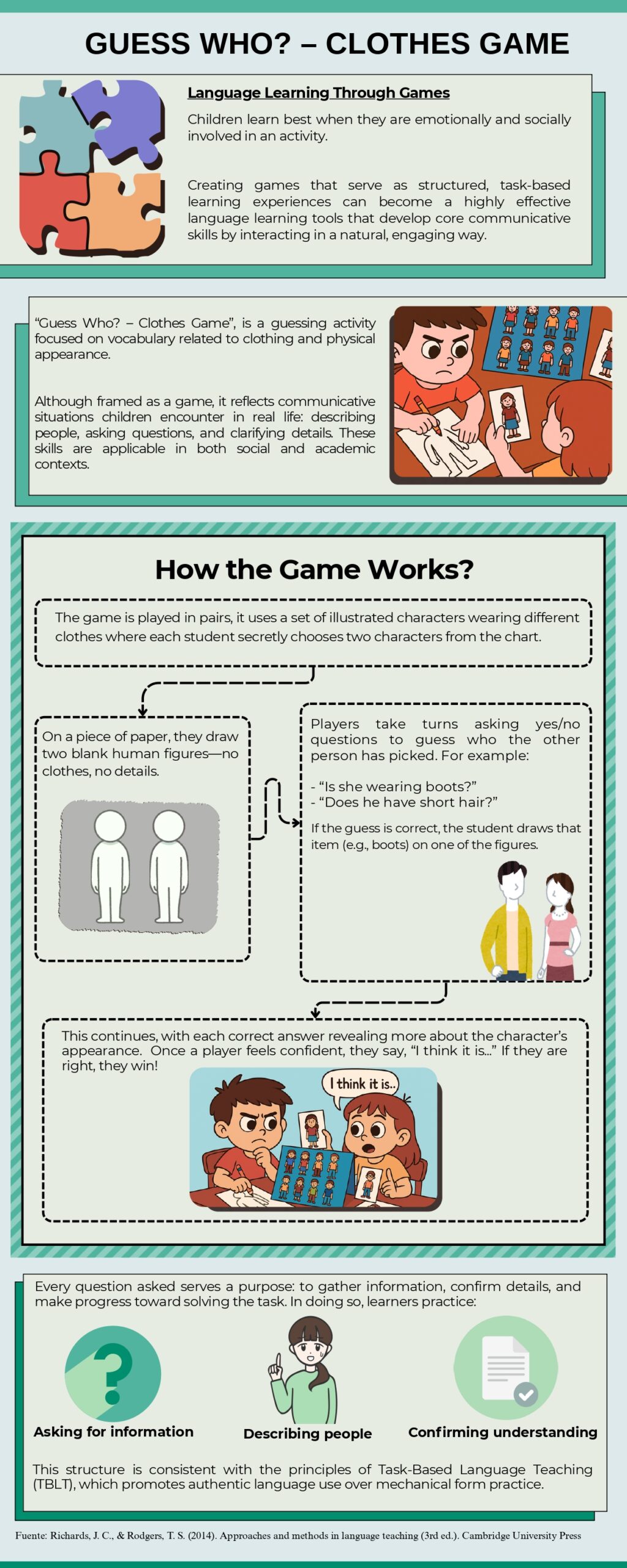



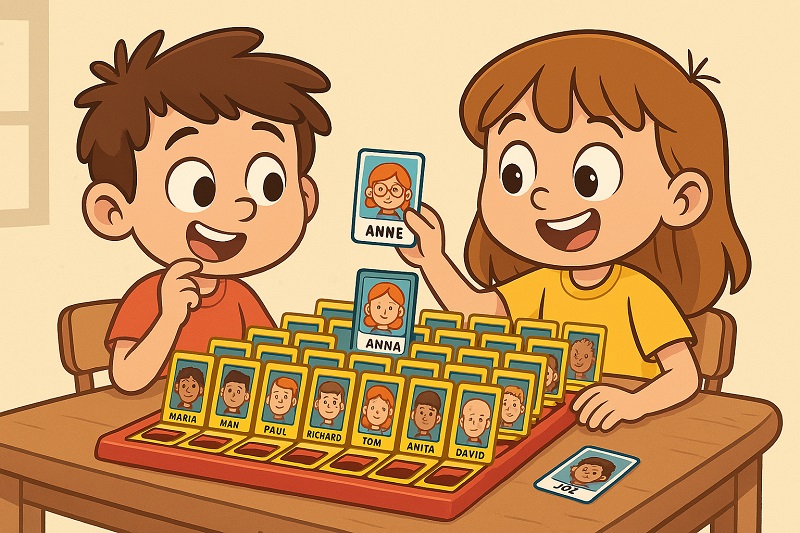

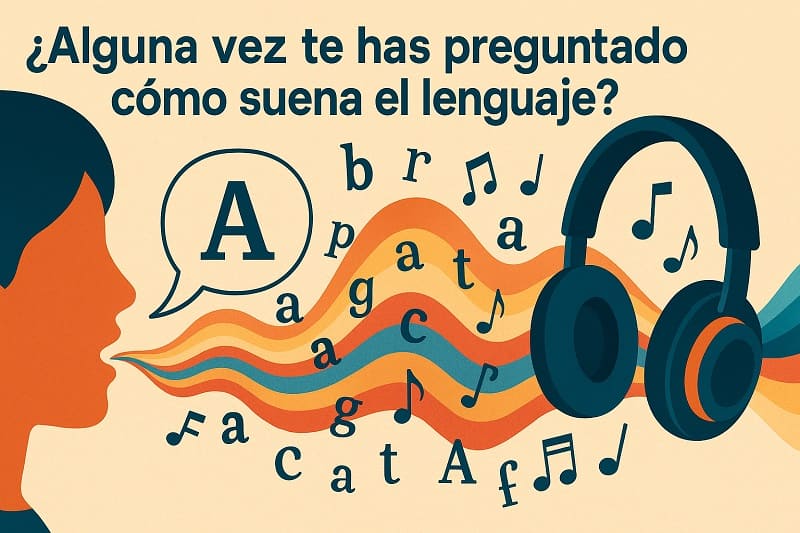

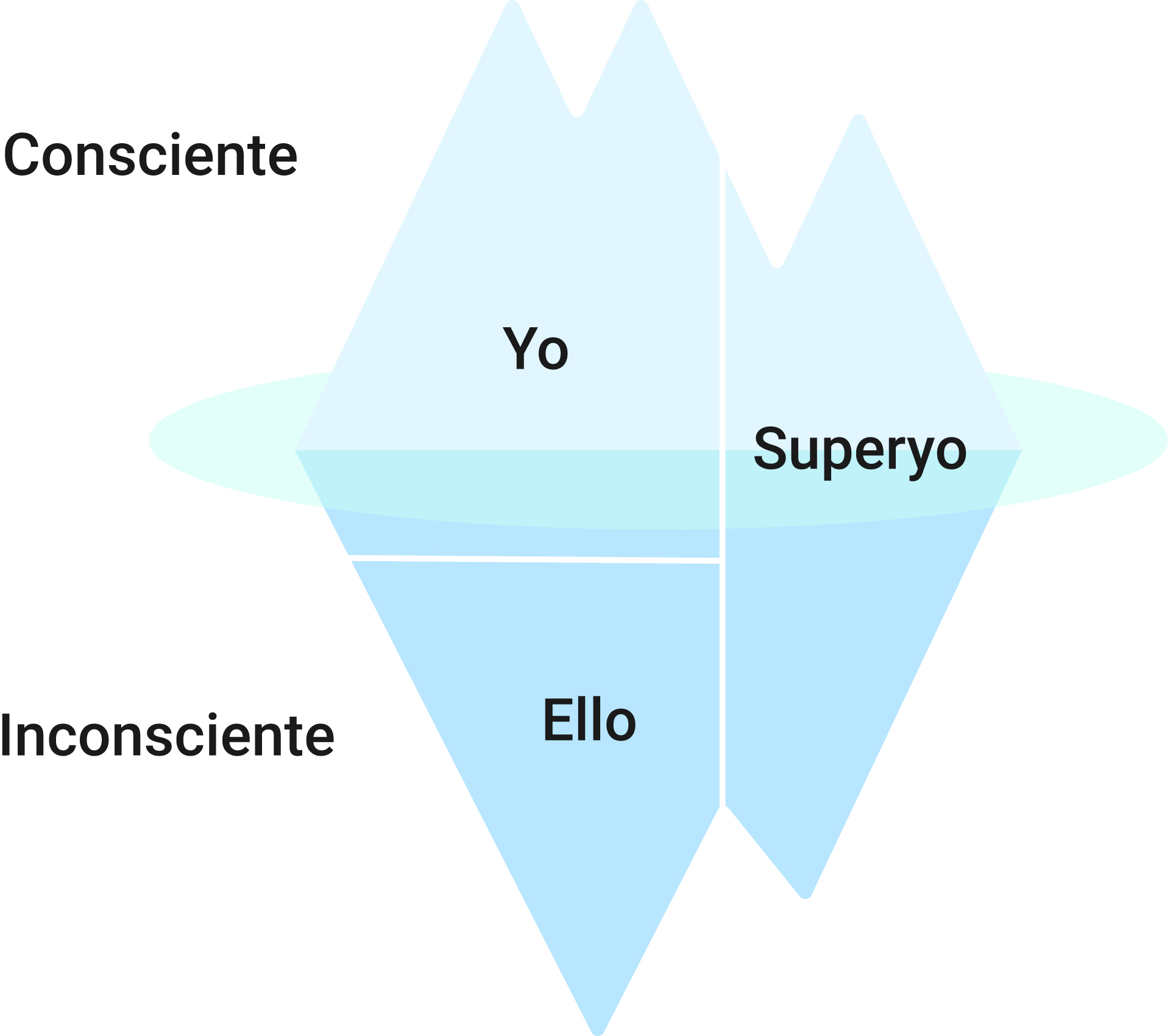
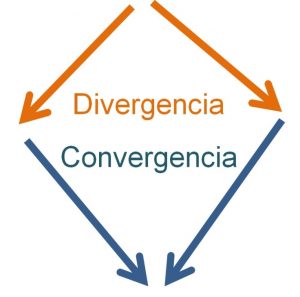
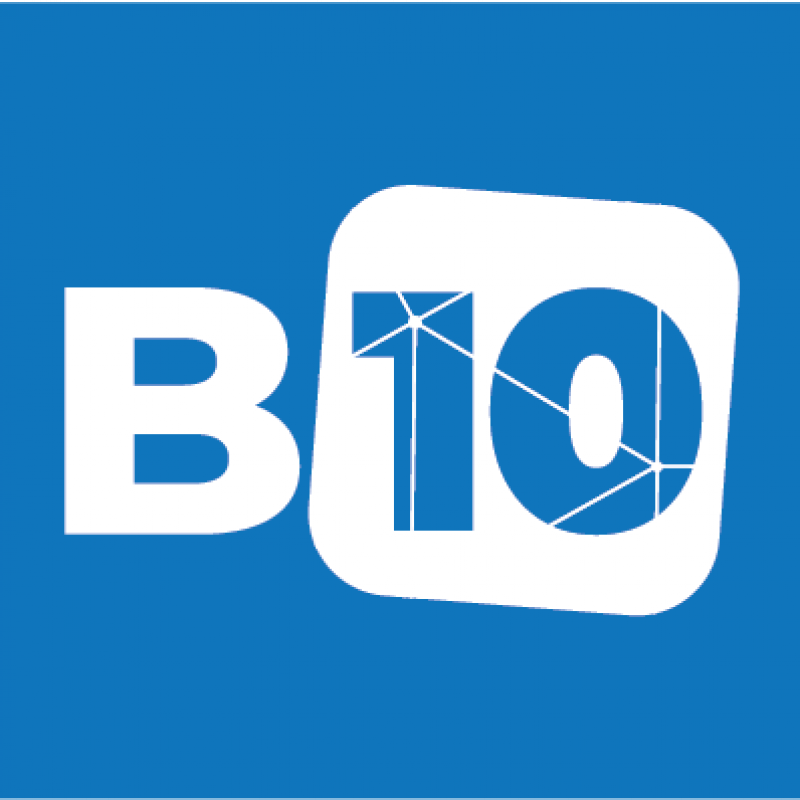
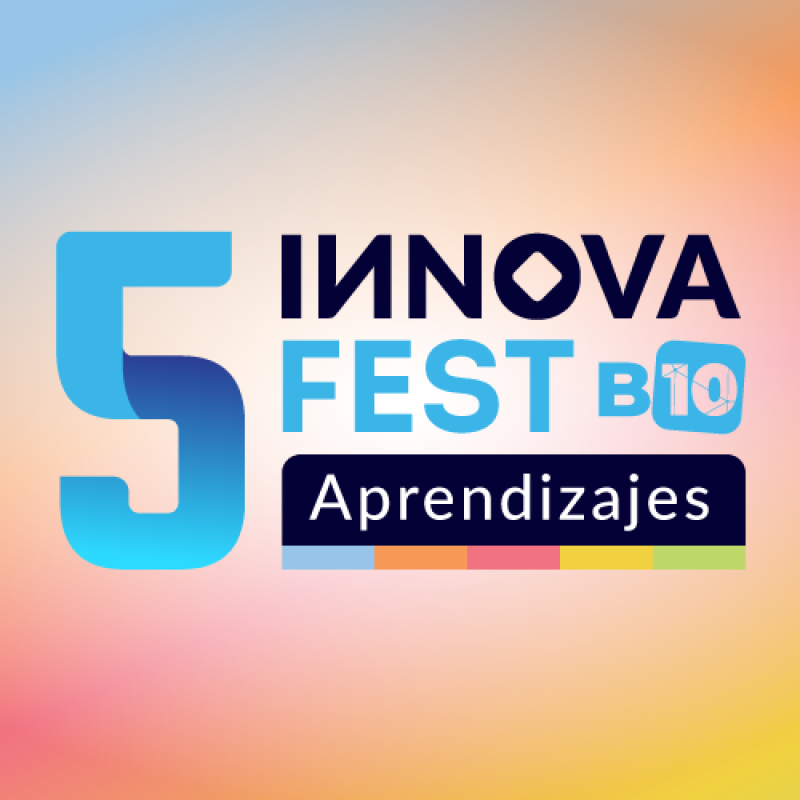

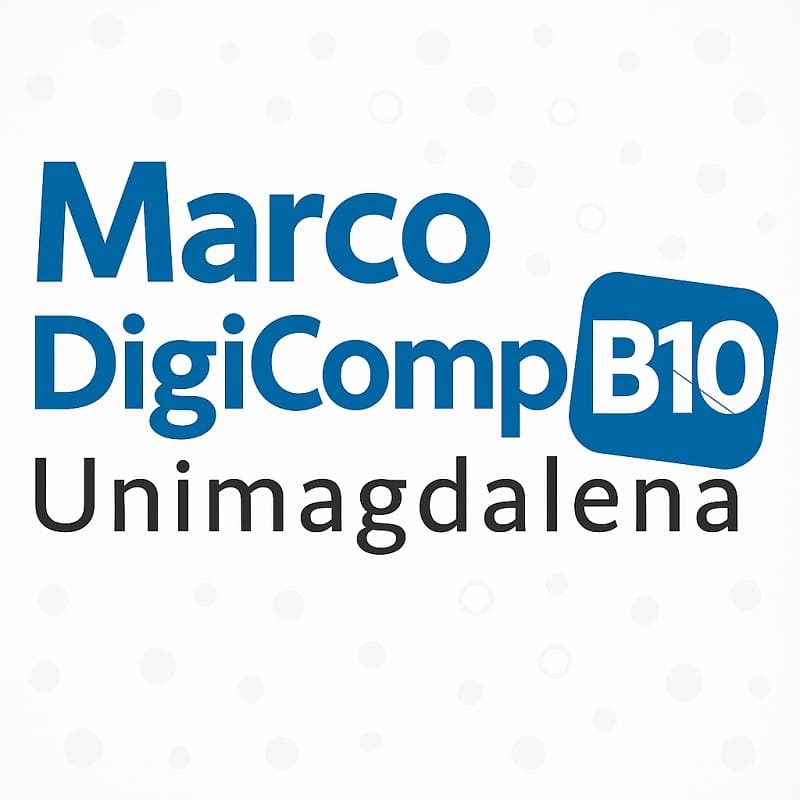

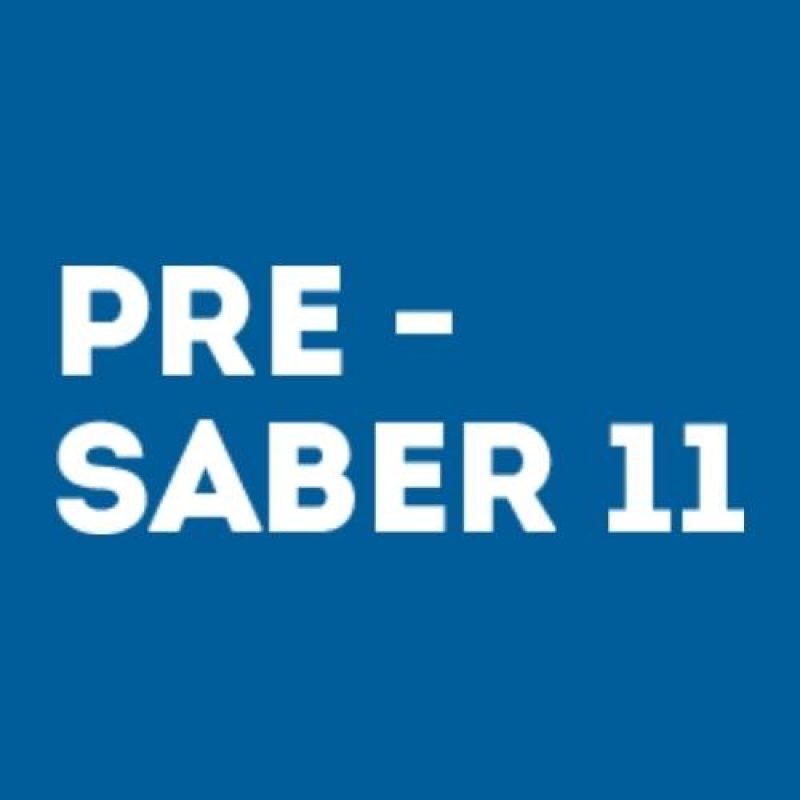



Comentarios